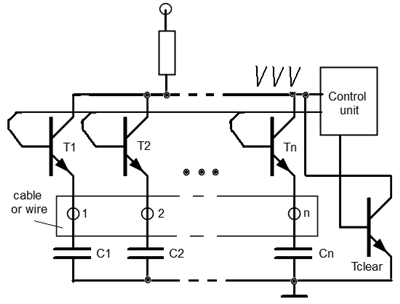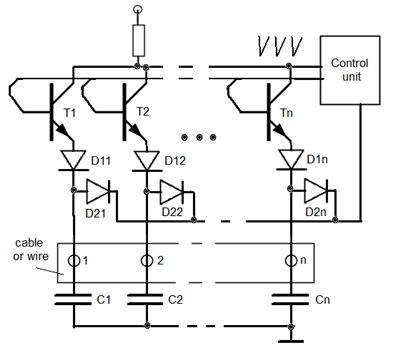Cables, harnesses, bare PCBs and other wired assemblies need insulation resistance testing. Number of points of controlled objects can be from one up to several tens thousand. Insulation resistances are large in size resistors. To control insulation resistance in automatic mode based on switching elements with high resistance installations are used. Such switching elements are electromechanical relay.
Circuit, shown below, allows you to control objects with a large number of points without the use of electromechanical relay. Numbers 1, 2,ů, n designate points of tested object. These points are connected to points of test installation with help of connectors or contact devices. Scheme works as follows. Control Unit switches on and off transistors in accordance with the algorithm of the functioning and also control the amplitude of pulses on the transistors T1-Tn collectors. In the initial state transistors T1-Tn and the transistor T˝leÓr are closed, and capacitors C1-Cn are discharged. When transistor Ti opens capacitor Ci and connected with him capacitors are charged. After the transistor Ti closes capacitor Ci begins to discharge through isolation resistance.When transistor Ti reopens amplitude of capacitor charge impulse on Ti collector depends on insulation resistance value. The Control Unit controls the amplitude of the impulse. After that installation is set in the initial state. To set the installation in initial state all transistors T1-Tn and the transistor T˝leÓr opens and capacitors C1-Cn discharge. Transistors T1-Tn are in inversed mode at this. Such a procedure is carried out for each point.

Figure 1.
The disadvantage of the circuit shown in Figure 1 is low level of test voltage that is determinated by value of allowed maximum of base-to-emitter voltage. Circuit shown in Figure 2 allows to eliminate this disadvantage. Diods D11-D1n prevent p-n junction breakdown.
